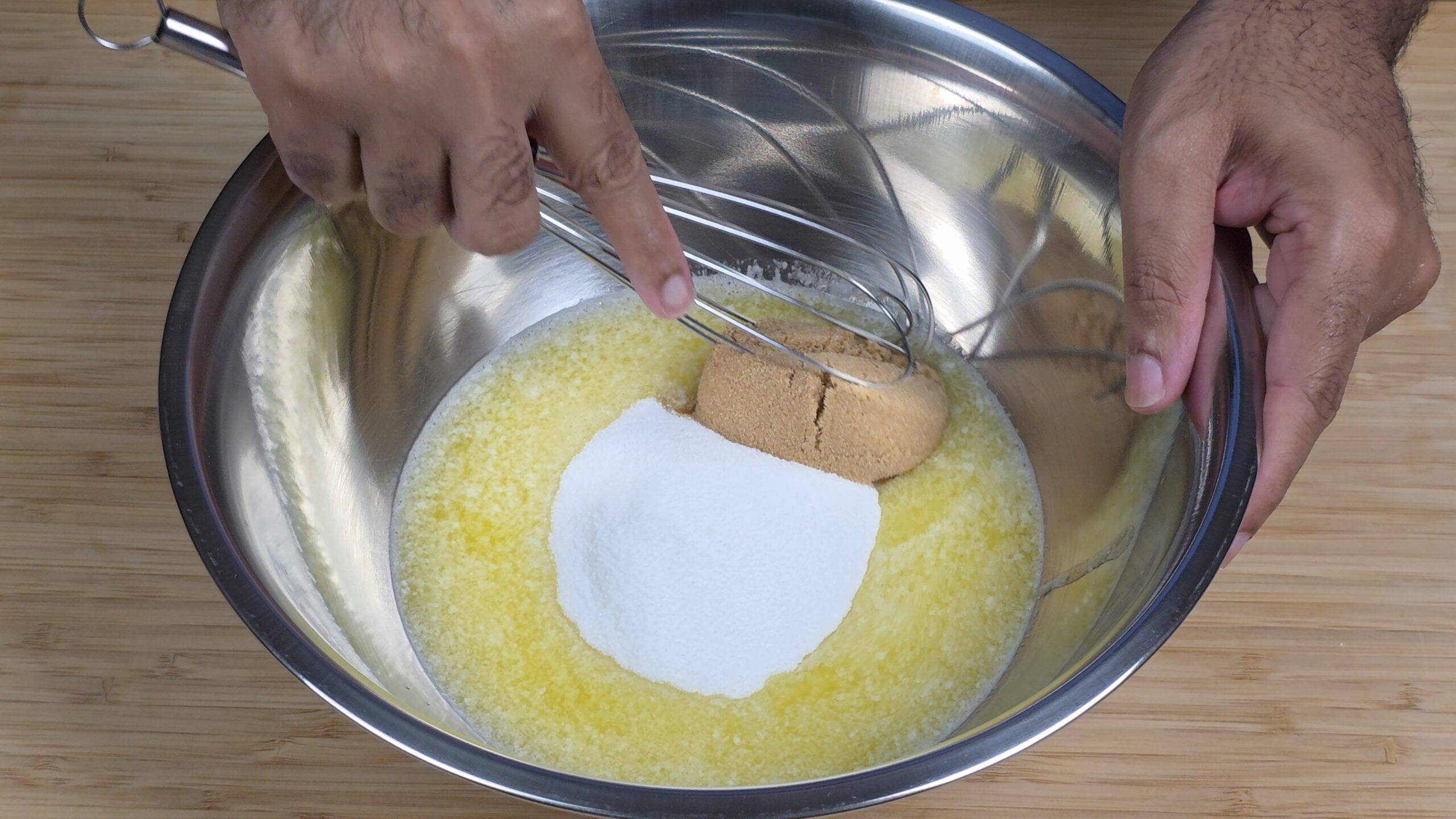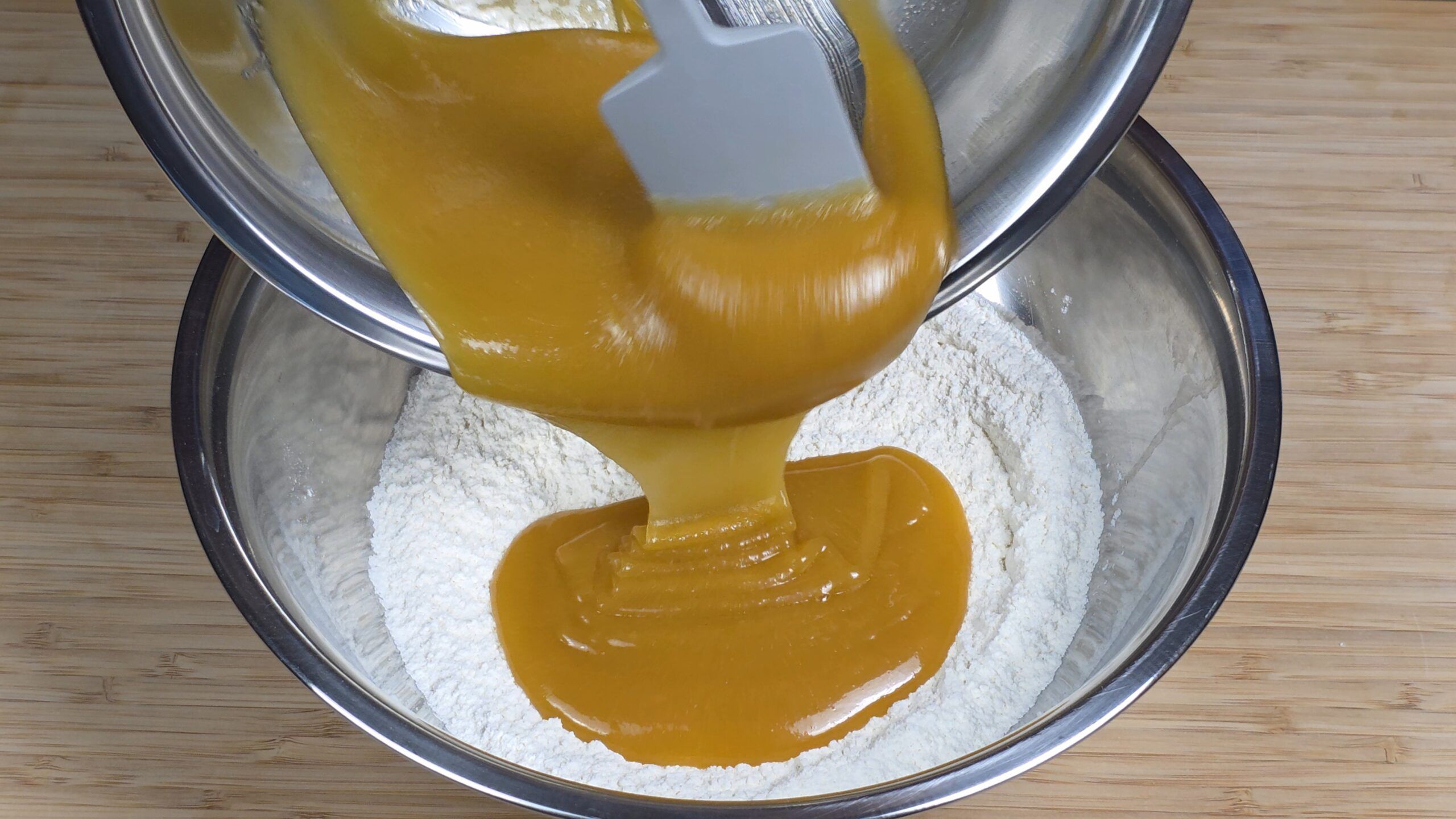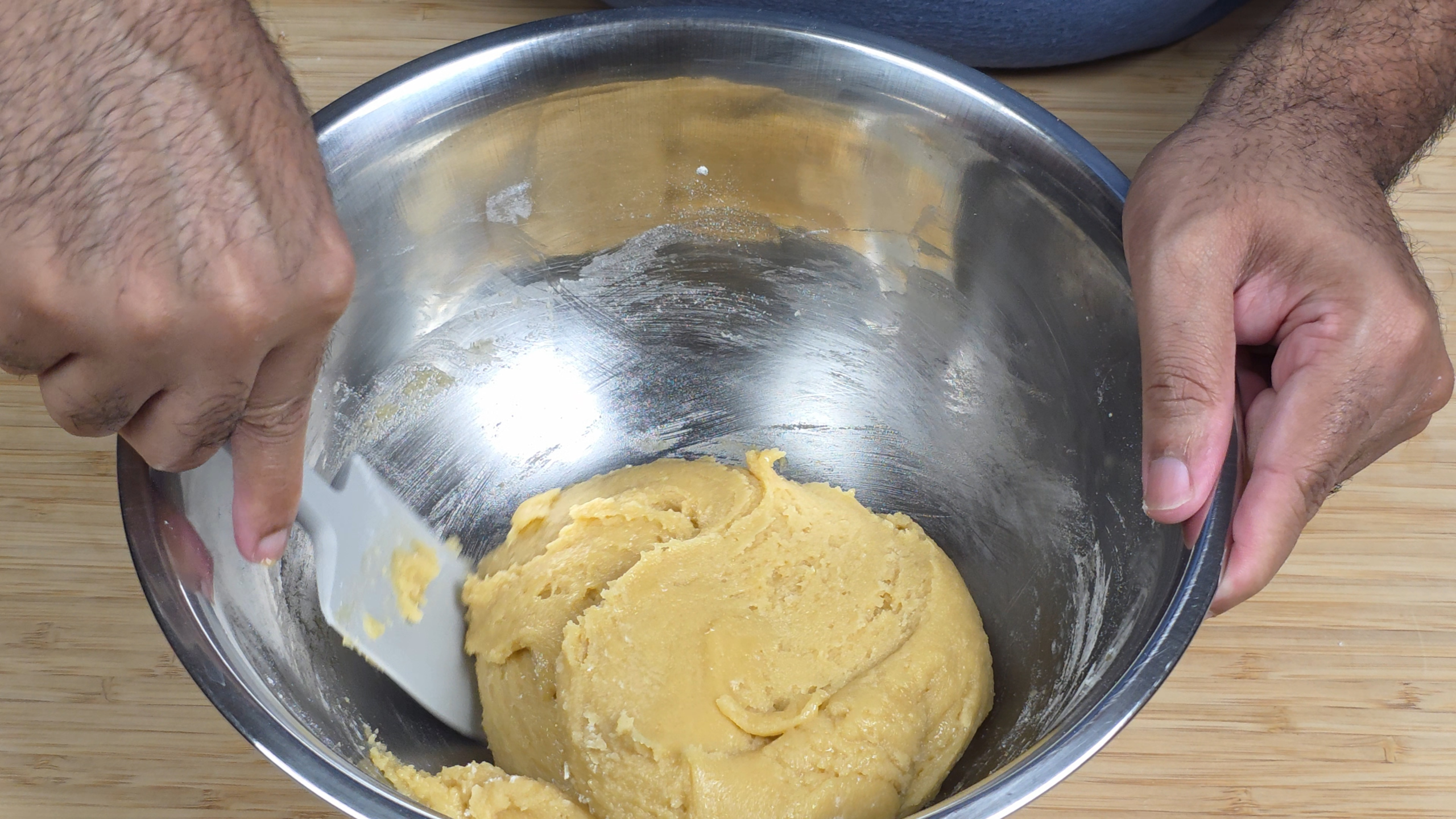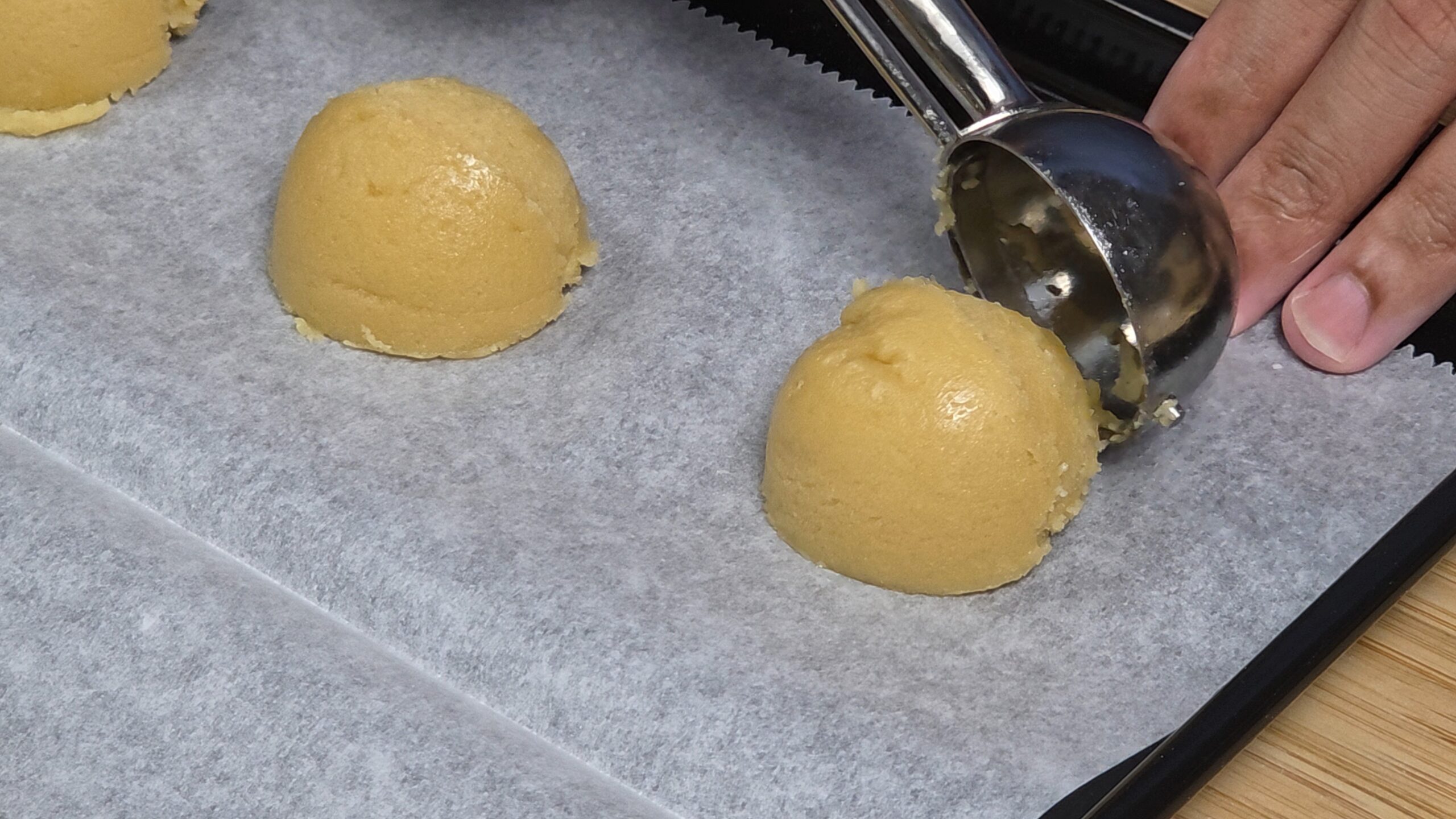Sugar Cookies are perhaps the most basic of all the cookies that exist! They have a very plain jane look when you bake them, they don’t include a whole bunch of extra nuts, chips, sprinkles or toppings, and more importantly, they’re likely the least divisive cookie you can think of. You’d be very hard pressed to find anyone who says they dislike sugar (they might say they can’t eat sugar for health reasons, but that’s a different story we won’t get into here). That being said, I sought out to find the recipe that strikes the right balance of simplicity and comforting flavor, and this recipe hits the bullseye, offering a “melt-in-your-mouth” quality and a subtle but delicate crispy edge.

Key Ingredients for Homemade Sugar Cookies
The dough for the sugar cookies is made from your standard ingredients: Flour, Baking Soda, Table Salt, Sugar, Butter, and Vanilla Extract. That said, what makes this recipe stand out from the rest is the use of Cream of Tartar, all Egg Yolks and Brown Sugar.
- Cream of Tartar: You will find that most recipes don’t incorporate the use of this ingredient for sugar cookies. However, after testing out & tweaking this recipe quite a bit, I found adding the Cream of Tartar really elevates it, for a few reasons. For starters, Cream of Tartar is a acidic compound that helps to neutralize the metallic taste you tend to get once baking soda is activated in the oven. Also, the cream of tartar helps to prevent the crystallization of the sugar as it bakes in the oven, ensuring you don’t end up with a dense texture. But on top of everything else, it really gives the cookies a uniquely complex flavor profile by giving them a bit of a tangy taste.
- Baking Soda vs. Baking Powder: With baking soda, the heat in the oven will initially cause the fat in the dough to melt and spread out quickly. This is because the gas from when the baking soda dissolves will help to keep the gluten in the flour from coagulating too soon. Then, in the final few minutes, the cookies will really firm up. Baking powder, meanwhile, is at least partially activated by the moisture in the dough long before baking. So this immediately cause the dough to firm up in the oven before the fats even have a chance to melt & spread. This is why I settled on using baking soda to get a more spread-out cookie.
- Brown Sugar: This is, admittingly, another unconventional ingredient in most sugar cookie recipes. The main reason people forego adding brown sugar is because it tends to give the cookies a darker color than what’s considered ideal for the classic sugar cookie. That said, while majority of the sugar in my recipe is white granulated (which is typical), I opted to replace some of the white sugar with brown sugar for a couple reasons. For one, the combination of both white sugar and brown is what gives cookies that healthy balance of a chewy interior with a delicately crispy exterior. Also, the brown sugar really enhances the richness of these cookies, by giving them pleasantly subtle hints of caramel & honey flavor.
- Egg Yolks: While most recipe call for using all or predominately whole eggs, I tested out this recipe with just the use of egg yolks and ended up getting a desirable result. The thing about egg whites is that they’re mostly just protein, which has a tendency to dry out baked goods. In the baking process, most of the emulsifying properties and fat that we associated with a whole egg lies entirely within the egg yolk. So ultimately, there’s virtually nothing of value lost from excluding the egg whites from these cookies. In fact, just using egg yolks alone really helps to enhance the richness of the flavor and give it a velvety texture.
And lastly, there’s one more thing I can’t stress enough. Cookies are highly sensitive to the proportion of fat vs protein (I.E. flour and egg whites) that is used. Even being off by a mere tablespoon can completely change the shape, texture and flavor. That said, I strongly advise that you use a spoon to gather your flour and even level off the top of the measuring cup with a knife. If you scoop out the flour with the cup itself, you risk packing way more flour into the cup (and eventually the dough) than what is required, thus your cookies won’t bake properly. Weighing your flour with a bowl and kitchen scale is also a perfectly fine option.
Tips for Making this Recipe
Allow the sugar cookies to cool for a minimum of 10 minutes after removing from oven. The inside of the sugar cookies will continue to set and coagulate even after you remove them from the heat. If you attempt to remove & eat the sugar cookies too soon while they’re still hot, you risk having them fall apart.
For the best results, use parchment paper. There are some recipes that suggest you can place your cookie dough on greasy (or lightly greased) cookie sheets. The reason I advise against this is because this can cause both the bottom of the cookies and the edges to overcook and burn (thus, in my humble opinion, making the cookies unappetizing). Meanwhile, if you decided to wing it by just placing the dough on a care cookie sheet, you risk having the cookies stick onto the cookie sheet as the fat melts then re-solidifies during the baking process. I strongly advise placing the cookie dough on parchment paper to ensure minimal sticking, sufficient browning as well as the right amount of spread.
Use a cookie scoop. Why? For one reason, it’s a way to avoid having to scoop & roll the dough for the sugar cookies and get your hands dirty. But also, a scoop will ensure all of the sugar cookies are the same size and they bake evenly. In fact, as extra insurance, I even like to level the dough in my cookie scoop with a knife (but doing this is optional). For this recipe, I used a 2 TBSP (1 oz) cookie scoop, and do note servings will vary if you use a smaller or large cookie scoop.
Bake a test cookie (or two). The problem with many home ovens, especially if they’re older, is that not all of them are properly calibrated to heat to the correct temp (some of them run too cold or even too hot). To ensure you may not have to adjust the temp higher or lower by about 25 degrees, it may not hurt to test some of the dough for the sugar cookies before attempting to bake it all at once to ensure they come out per the recipe instructions given.
Frequently Asked Questions
Can you add Sprinkles or M&Ms to this recipe?
Absolutely! I’m personally not a fan of having these extra ingredients in my sugar cookies (personal preference), which is why I officially excluded them from my recipe. And frankly, in my humble opinion, it’s not really a classic sugar cookie with these additions. That being said, if you prefer having these items in your sugar cookies, you can certainly add them while combining the wet + dry ingredients.
Is it required to chill the dough?
While there are many recipes that require you chill the dough, the nice about this one is that is does *NOT* require any chilling prior to baking. That being said, for the best result, I highly recommend allowing the dough to rest at room temperature for 15 minutes. This will allow time for the flour to fully hydrate (which will help to give the interior of the sugar cookies a chewier texture) as well as allow time for the butter to firm up, so that there isn’t excessive spread of the sugar cookies once they’re in the oven.
Can you substitute Oil for the Butter?
The answer to this question always gets tricky.
I do understand that not everyone is able to eat dairy products and that butter is simply not an option for such individuals. In such cases, you *COULD* replace the butter with a cooking oil, but with a couple of important caveats. For starters, while cooking oils and butter are both different types of fats that can be used in baked goods, their fat composition is not entirely equal. Cooking oils tend to have virtually no water in them (thus is 100% fat), whereas Butter typically has a water content of 20-25% (depending on the brand). So in the event you attempt to substitute the butter for cooking oils, I’d advise only using 75-80% of the amount of cooking oil.
The other caveat is that the use of cooking oils will change the flavor profile of the cookies. Seed oils (I.E. Vegetable Oil, Canola Oil, etc.), are known to be neutral-tasting, meaning they have no flavor. So you will be losing the subtle nuttiness / sweetness in your cookies that Butter offers. But then you also have your non-seed oils such as Coconut, Avocado or Olive Oil. These oils are *NOT* neutral-tasting, which means if you use them, you may end up with cookies that taste like Olives, Avocados or Coconuts, as the oils will overpower the other ingredients.
All of that said, the short and sweet answer I can give you is I *DON’T* recommend it. For a more detailed answer, see above.
Can you freeze the dough? And if so, for how long?
You can definitely freeze these sugar cookies! Once the dough has rested and you’ve formed them into balls with the cookie scoop, place them in a freezer bag and they should maintain their freshness for at least 3 months. While they may still be safe ton eat for up to 6 months in the freezer, the sugar cookies will gradually lose their flavor and texture after 3 months have passed. For the best spread, I would advise allowing them to thaw at room temperature for 1-2 hours before baking them in the oven.
How long can you store sugar cookies without freezing?
As long as the sugar cookies are stored in a airtight container or bag, they should be safe to eat for at least 3 days. After 3 days, they may begin to lose their flavor & texture. Once 5 days have passed, I would advise that you dispose of the sugar cookies as they may no longer be edible.
Try These Other Cookie Recipes
-
Best Crispy & Chewy Chocolate Chip Cookies
-
Best Soft & Chewy Peanut Butter Cookies
-
Best White Chocolate Macadamia Nut Cookies
-
Best Pillowy Snickerdoodle Cookies
-
Best Chewy Gingersnap Cookies
-
Best Oatmeal Cookies (NO Raisins)
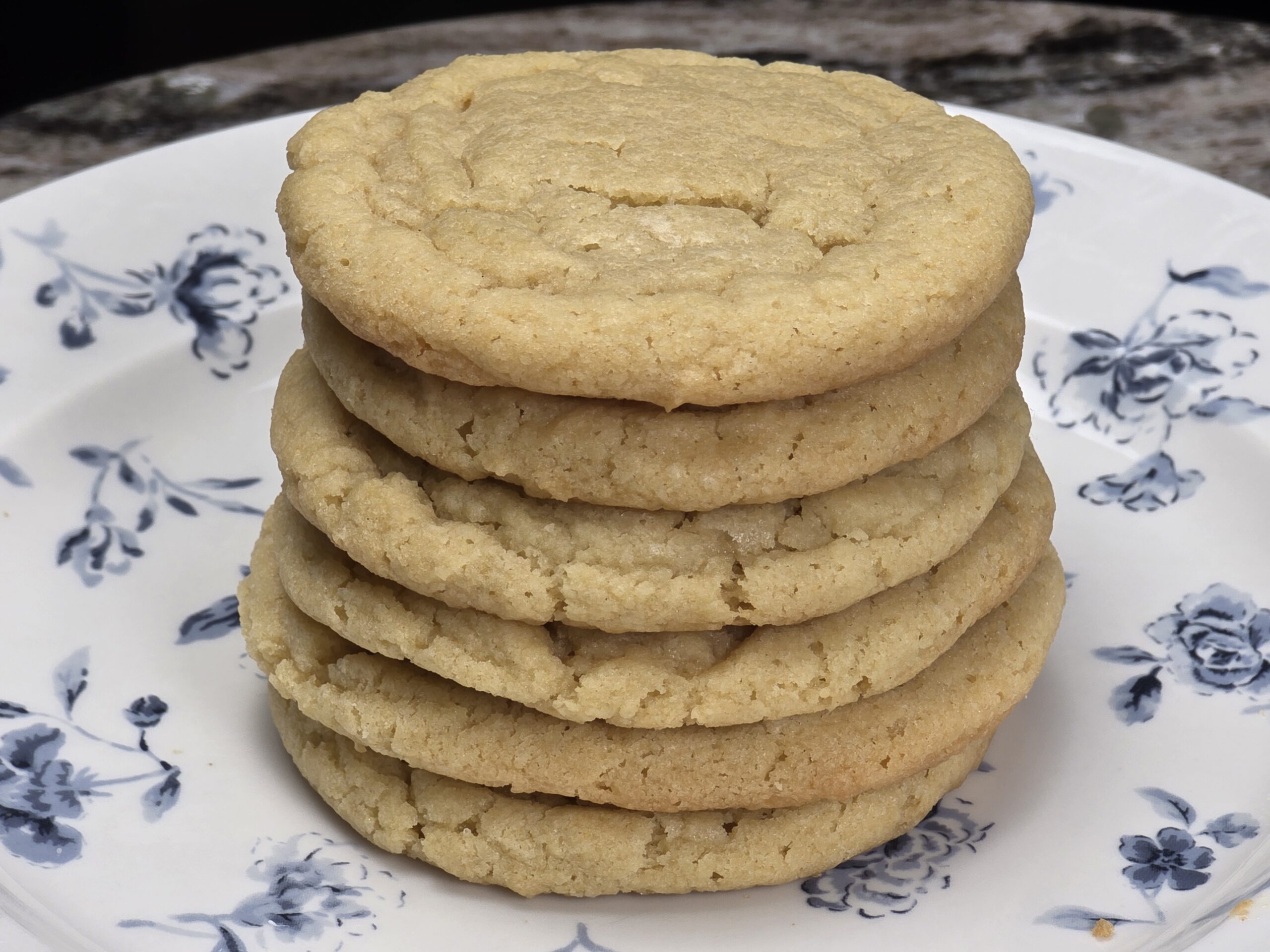
Best Sugar Cookies From Scratch
Equipment
- Whisk(s)
- Plastic Spatula (s)
- 2 Large Mixing Bowls
- Parchment Paper
- Baking Sheet(s)
- Measuring Cups/Spoons
- 1 Knife
- 2 TBSP Cookie Scoop
Ingredients
- 1 3/4 Cup All-Purpose Flour
- 1 TSP Cream of Tartar
- 1/4 Cup Light Brown Sugar
- 3/4 Cup White Granulated Sugar
- 1/2 TSP Iodized Salt
- 1 TSP Baking Soda
- 14 TBSP Melted Unsalted Butter (3/4 Cup and 2 Tablespoons)
- 2 TSP Vanilla Extract
- 2 Extra Large Egg Yolks
Instructions
- Combine dry ingredients (Flour, Baking Soda, Cream of Tartar and Salt) in large mixing bowl.
- Whisk dry ingredients until combined.
- Add butter + sugar in a separate large mixing bowl.
- Whisk butter with sugar until well-combined (approx. 60 seconds).
- Add other wet ingredients (Egg Yolks, Vanilla Extract) to combined Butter + Sugar and whisk for 30 seconds each until combined.
- Add wet ingredients into bowl with dry ingredients and fold until just combined.
- Preheat oven to 350*F and line cookie sheet with parchment paper.
- Using cookie scoop, place dough onto cookie sheet and ensure they are evenly spaced.
- Place cookie sheet(s) in oven and bake for 10 minutes.
- Allow cookies to cool before serving.




